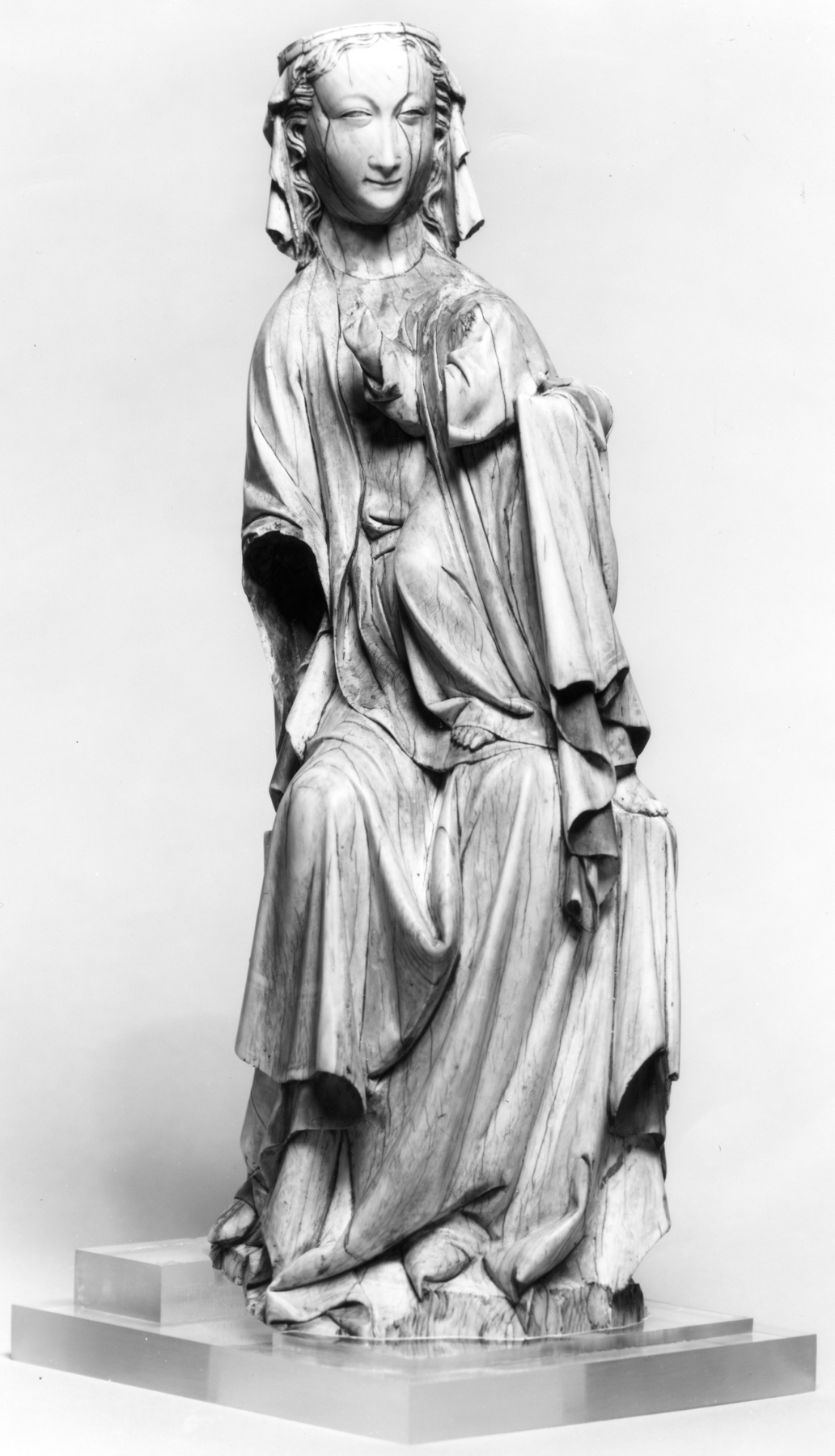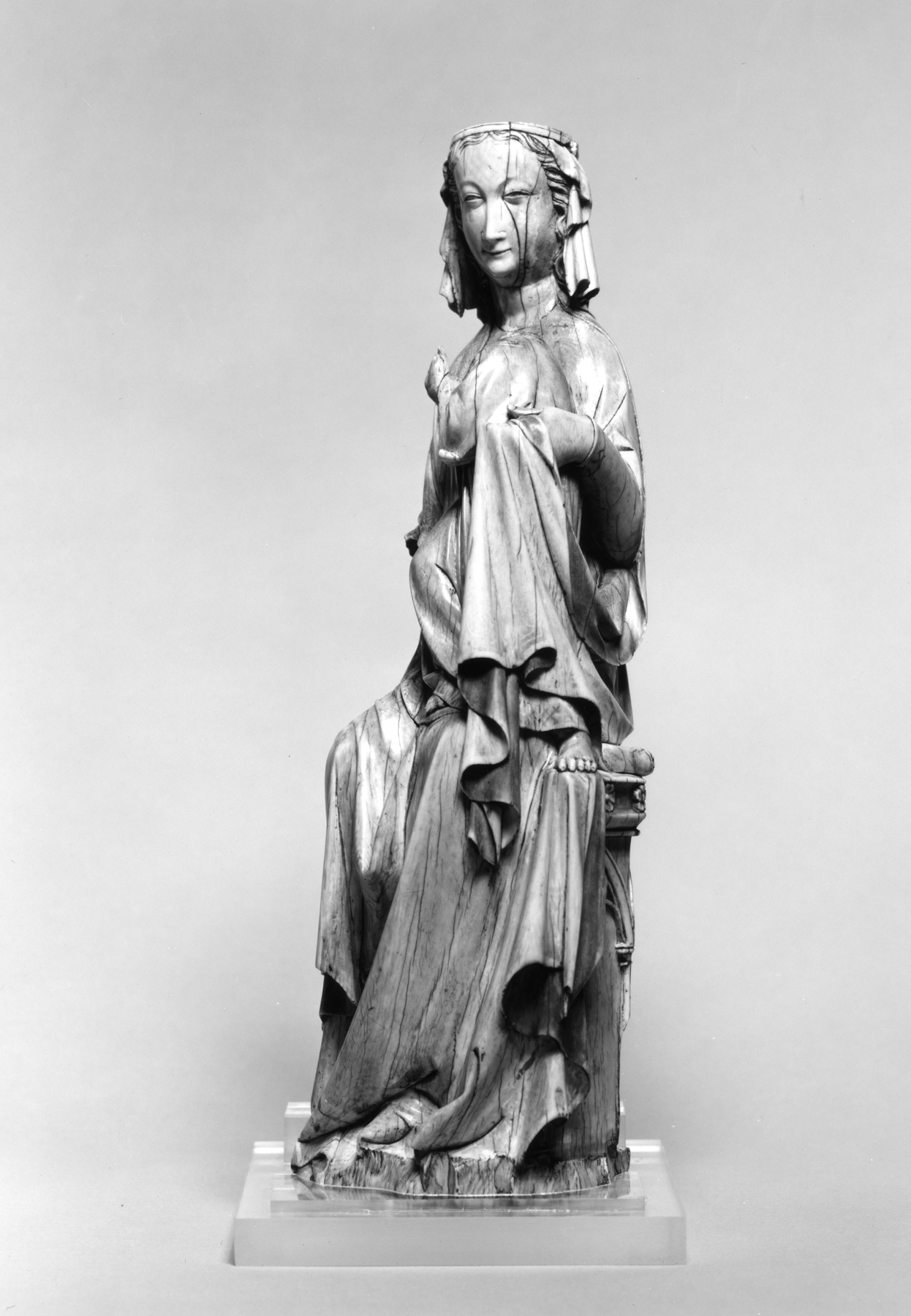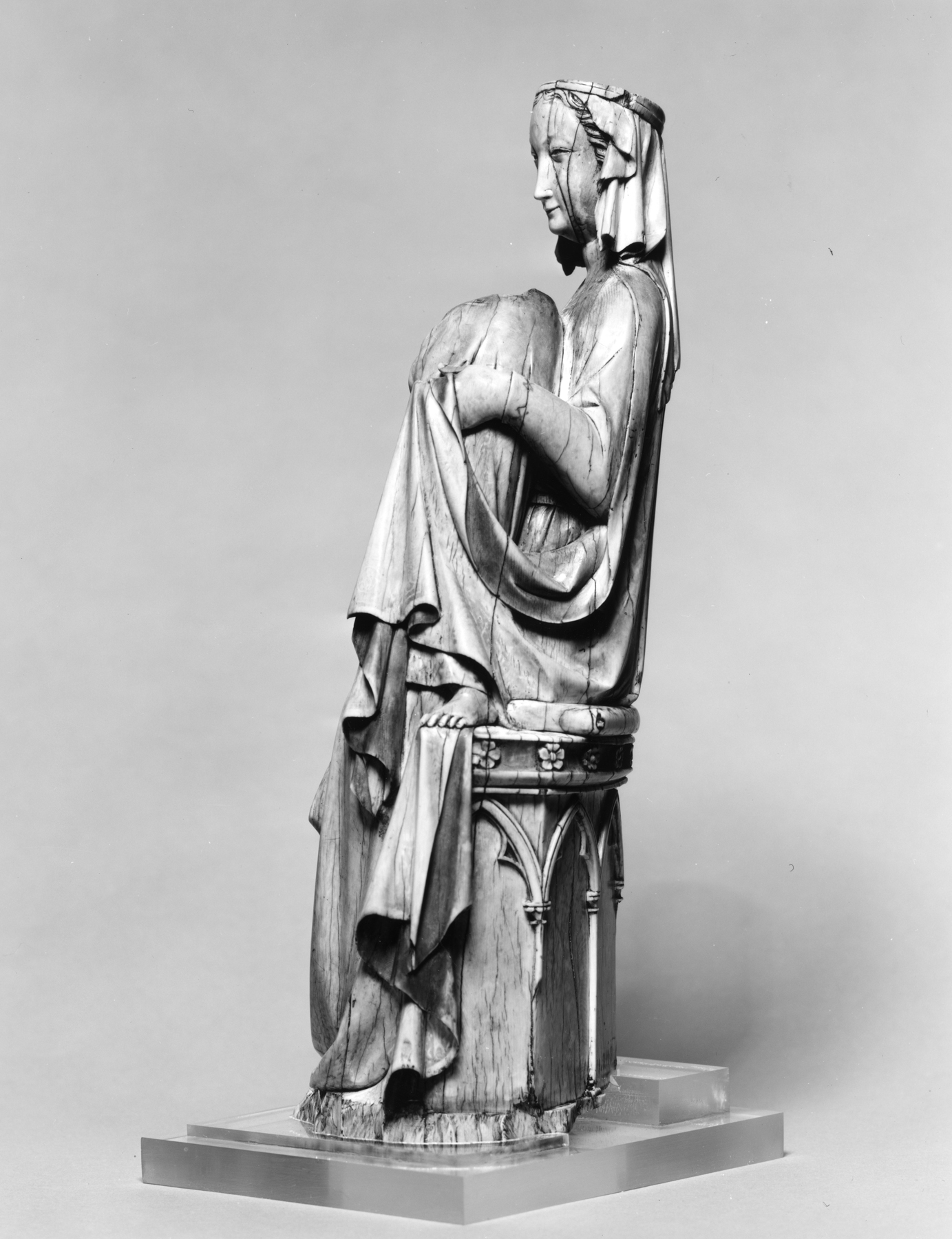Virgin and Child
(Medieval Europe )
The seated figure of the Virgin arches gently backward to conform to the curve of the ivory tusk. The Christ Child stands in her lap, with one foot on the throne, and reaches for the stem of lilies (?) that were held in the Virgin's right hand. The group is carved in the round. The throne is decorated with thin colonnettes supporting pointed arches, and there is a band of rosettes on the molding of the seat.
Traces of blue pigment remain on the skirt, painted over a reddish stain, and the silhouettes of gilt embroidery patterns occur on the borders. The Virgin's crown and right arm are missing. The Child's head, his left hand, and part of his right hand are missing. A wedge of ivory at the base, which established the proper position of the group, is missing, and there are two major chips along the base. The right half of the Virgin's face was restored in the 19th century.
Provenance
Provenance (from the French provenir, 'to come from/forth') is the chronology of the ownership, custody, or location of a historical object. Learn more about provenance at the Walters.
M. Godfroy Brauer, Nice; Brauer Sale, Christie's, London, July 4 1929, lot 146; Henri Daguerre, Paris [date and mode of acquisition unknown]; Henry Walters, Baltimore, 1930, by purchase; Walters Art Museum, 1931, by bequest.
Conservation
| Date | Description | Narrative |
|---|---|---|
| 5/4/1970 | Treatment | other |
Geographies
France, Paris (Place of Origin)
Measurements
H: 10 13/16 in. (27.5 cm)
Credit Line
Acquired by Henry Walters, 1930
Location in Museum
Accession Number
In libraries, galleries, museums, and archives, an accession number is a unique identifier assigned to each object in the collection.
In libraries, galleries, museums, and archives, an accession number is a unique identifier assigned to each object in the collection.
71.243








